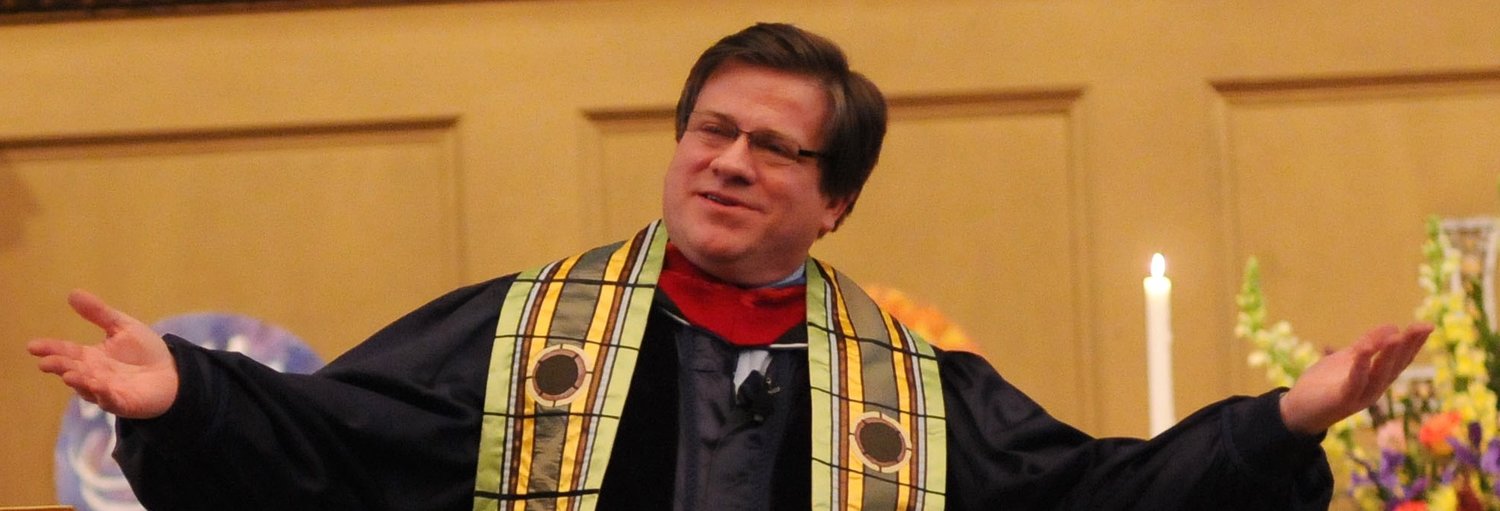For the Inward Journey, Day Six
God Is . . . (part two)
The second thing that man’s faith teaches him about God is that God is near. One of the sayings of Jesus discovered among the papyri at Oxyrhyncus is this: “Jesus saith: ‘Wheresoever they may be, they are not without God; and where there is one alone, even then I am with him. Raise the stone, and there thou shalt find Me; cleave the wood and I am there.’” Isaiah gives a vivid picture of Jehovah, a vision which came to him during the year of the death of King Uzziah. He saw the Lord on a great white throne, high and lifted up, and His Glory filled all the temple. Jesus erected a pyramid out of the funded insights of all the prophets, scaled its heights and brought God down out of the clouds, and found Him to be an intimate part of the warp and woof of human experience and human struggle.
Very often, we find it difficult to think of God as a part of life because we associate Him rather exclusively with the supernatural, the miraculous, the unusual. He belongs in the special services division of human life, where only the rare and extraordinary aspects of life are to be found. It was this conception that Jesus sought to undermine in his day. If God be far away, then he comes to us only on rare occasions and in rare situations. Of course, there is a sense in which the is true; the high moment, the great experience, the supreme challenge, the poignant sense of great contrition, all there may mark a sense of special Presence. But we do not live in such rarified atmosphere. What we most want to know about God is whether He is present in the commonplace experiences of ordinary living, available to ordinary people under the most garden variety of circumstances. That God is not far from any one of us is the essence of the Gospel which Jesus proclaimed, “Closer is He than breathing, nearer than hands or feet.”
(For the Inward Journey: the writings of Howard Thurman.
Selected by Anne Spencer Thurman. page 117
originally published in Deep is the Hunger)
I find it amusing this morning to think about the Oxyrhyncus papyri. They were a huge number of documents that had been buried in a dump in Egypt over the course of a millennium (Third Century BCE to 640 CE), but discovered in the late nineteenth century by English excavators. They were then distributed to Egyptologists (and “collectors”) throughout the world to be examined. Some are full documents, but many many of the papyri are tiny fragments. It makes me smile that one of the documents is a promise, for a fee, that a wrestler throw his upcoming match.
The Divine person (power?) that Thurman seeks is near at hand, indeed, even in a dumping ground. Looking at the state of my living room right now, I’m hoping there is something of God in the clutter (itself bound for recycling or the trash). The little poster Judi Tenhunen gave me (and might have made for me) says “From out of [demoralizing] chaos can emerge creativity [via unfettered curiosity].” That is how I have the confidence to put one step in front of the other each day.
Yes, the Divine is as close as that scrap of paper, that envelope with my weekly budget drawn on the back, that Post-it note with the congregant’s name . . . that’s how close inspiration may be to “let go and let God,” to breathe deeply and find an inner strength, to utter a little hope into the Universe for good outcomes for a friend’s therapy. That’s how close hope may be.
